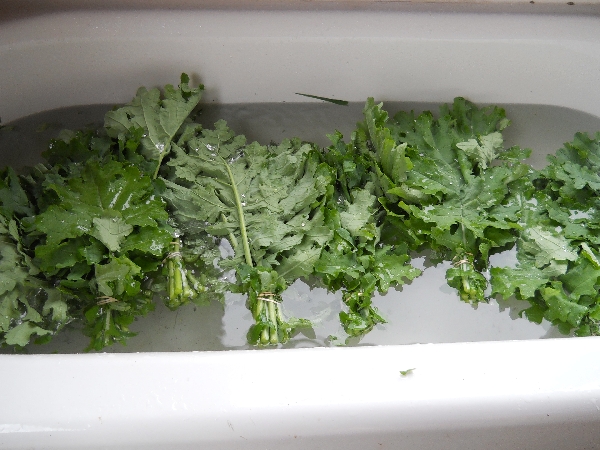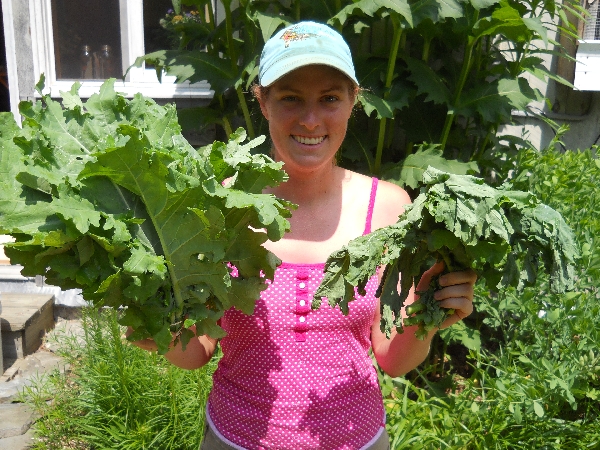“Hey, this kale is all limp!”
“These carrots are all rubbery!”
Have you ever said that? If you have, this post is for you!
If you haven’t, then either you already know some of this (yay!) or you haven’t had fresh greens or other veggies in your fridge very often.
Wilty greens or limp carrots aren’t just unappetizing, they’re also not as nutritious either. And they plain just don’t last as long or taste as good.
Whether you are a gardener or a farmers market shopper or a CSA member, you “get” how special truly fresh veggies are, right?
So that’s why we’re here to help you not let the freshness go to waste!
At Ripley Farm we take great care to get our CSA farm share vegetables to you in the best condition possible so that they will have maximum freshness for you all week.
We want our CSA members to enjoy vegetables in ‘just picked’ condition for many days after the pickup day! Our farm and our members must play a role in making this happen.
And if you’re a gardener or a farmers market customer, this will help you to make your veggies last the longest, too!
Your farmer’s role:
As farmers, we wouldn’t be doing our job right if we didn’t promise to deliver the freshest veggies possible!
If you’re a gardener or a farmers market shopper, maybe you’ve noticed that when you either harvest, buy, or leave out your veggies when it is hot they wilt very fast? Yep! That is what this part is all about.
We know that you appreciate FRESHNESS!
In order to accomplish this, harvesting greens and other vegetables before they get too hot in the garden from the sun is a must! This is why we harvest your greens first thing Tuesday morning. We then hydro-cool them in cold water and get them into our refrigerated walk-in cooler as fast as possible. Here’s a picture of just picked kale getting hydro-cooled:

We then pack them into your CSA box lined with one big plastic bag. You take your veggies home with you…
Our babies… They’re out of our hands!
(Tip for the gardeners out there: Get yours in the morning before the sun is hot, and you can do this, too!)
Your role as a veggie lover:
You promise to read on and learn how to store everything properly so that it maintains its freshness the longest! Right? Yes?
I hope the answer is yes!
No? Skeptical? Read on about our experiment with kale…
We put 2 bunches of fresh harvested kale in our fridge. The first bunch was in a plastic bag completely covering the greens. The second bunch was not in a plastic bag. It was simply placed on the shelf in our fridge. 24 hours later, can you guess which one looked fresher?

I’m sure the moral of the story is clear to you… “Handle with care”!
If you are new to garden fresh veggies and/or our CSA this year you may need to beef up your vegetable storage knowledge. And before the garden starts booming and the CSA shares start coming is the perfect time to do this.
The way you store your fresh veggies after you bring them home can make or break how much you like them, how much you eat of them, and ultimately how you feel about the value of them to you!
So let’s make the most of your investment in garden fresh vegetables and do it right the first time. Follow the simple lists below and learn how to do just that.
How to Store Your Veggies to Make Them Last
I have broken this into three main storage conditions that comprise pretty much all of the veggies that can be grown locally here in Maine. Look through these lists to get an idea for the best storage conditions for each veggie!
Storage condition #1: Maintain cold temperature AND moisture
Many veggies need to be kept cold and have the moisture maintained to prevent drying out and wilting. Remember the kale??
Here are some good ways to do this gleaned from conversations I’ve had with experienced CSA members:
- Regular recycled plastic bags (easy choice)
- Debbie Meyer Green bags: These things work amazingly and if properly taken care of can be reused all season long!
- Special food storage containers like these from Tupperware
- Cotton bags such as these
- Organic cotton bags such as these
- Reusable Mesh Produce bags such as these
- For washed and spun dry lettuce, one member suggests: “line a gallon storage bag with a couple sheets of dry paper towels to absorb any extra moisture. Once the towels absorbs the moisture it helps to keep the greens crisp.”
- Reuse your freezer bags to store produce in in the fridge
- Or a paper towel wrapped around the veggie to keep the moisture in (and stored in the crisper drawer)
Veggies that need refrigeration AND moisture to store their best:
- Arugula
- Beets, roots
- Beets, greens
- Broccoli
- Brussels Sprouts
- Carrots
- Cauliflower
- Cucumbers
- Eggplant
- Fennel
- Fresh Garlic (green garlic)
- Fresh herbs (cilantro, dill, parsley etc)
- Fresh onions (bunching onions)
- Green beans
- Greens of all kinds!
- Kale
- Lettuce
- Mesclun Mix (baby greens mix)
- Pac Choi (Bok Choy)
- Peas
- Purslane
- Radishes
- Rutabaga
- Scallions (Green onions)
- Spinach (& ‘Tatsoi’ Summer Spinach)
- Summer Squash
- Swiss Chard
- Turnips
- Zucchini
Storage condition #2: Maintain cold temperature
These veggies need to be kept cold, but don’t need as much moisture control, especially if stored short term, like up to one month. You can do this by just putting them into the crisper drawer or simply on the shelf of the fridge.
- Cabbage
- Kohlrabi
- Peppers, green, red, hot
- Leeks
Storage condition #3: Store at cool room temperature
These veggies can and should be left out at room temperature. Use up quickly if you see a soft spot.
Out on the counter (out of plastic bag)
- Tomatoes
In the pantry (cool and dry, out of a plastic bag)
- Garlic
- Onions
- Potatoes
- Winter Squash
Don’t think you can remember this all? Don’t worry, if you’re a CSA member, you’ll get a newsletter every week that will have storage tips in it for every veggie you receive for your reference. 🙂

Second pickup of veggies and we couldn’t be happier. I’ve always enjoyed having a garden and fresh vegetables. Your quality is superb!!! You can’t buy this level of freshness, good taste, and variety at the grocery store in town. I can’t even grow it as good as you. Keep up the good work and thank you.